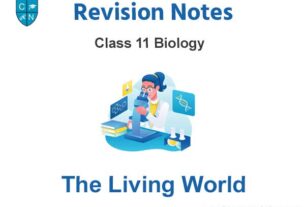Please refer to Heredity And Evolution Class 10 Science notes and questions with solutions below. These revision notes and important examination questions have been prepared based on the latest Science books for Class 10. You can go through the questions and solutions below which will help you to get better marks in your examinations.
Class 10 Science Heredity And Evolution Notes and Questions
Heredity
Heredity refers to the transmission of characters from parents to offspring.
Inherited Traits: An inherited trait is a particular genetically determined feature that distinguishes a person from the others for example; attached or free ear lobes in human beings.
Rules for the inheritance of traits:
Mendel’s contribution: The rules for inheritance of traits in human beings are related to the fact that both mother and father contribute an equal amount of genetic material i.e. DNA to their offspring. So, an offspring will get two versions of that trait from the two parents. Mendel worked out rules for inheritance of these traits. Gregor Johann Mendel regarded as the ‘Father of Genetics’ performed his experiments with garden peas (Pisum sativum) in the garden behind his monastery Gene is the part of a chromosome which controls a specific biological function.
Contrasting characters: A pair of visible characters such as tall and dwarf, white and violet flowers, round and wrinkled seeds, green and yellow seeds etc.
Dominant trait: The character which expresses itself in a (Ft) generation is dominant trait. Example: Tallness is a dominant character in pea plant.
Recessive trait: The character which does not express itself but is present in a generation is recessive trait. Ex. dwarfism in the pea plant.
Homozygous: A condition in which both the genes of same type are present for example; an organism has both the genes for tallness it is expressed as TT and genes for dwarfness are written as tt.
Heterozygous: A condition in which both the genes are of different types for example; an organism has genes Tt it means it has a gene for tallness and the other for dwarfness only tall character is expressed.
Genotype: It is genetic makeup of an individual for example; A pure tall plant is expressed as TT and hybrid tall as Tt.
Phenotype: It is external appearance of the organism for example; a plant having Tt composition will appear tall although it has gene for dwarfness.
Law of Dominance: When parents having pure contrasting, characters are crossed then only one character expresses itself in the Ft generation. This character is the dominant character and the character/factor which cannot express itself is called the recessive character.
Multiple Choice Questions
Question.Which of the following is not a direct conclusion that can be drawn from Mendel’s Experiment?
(a)Only one parental trait is expressed
(b)Two copies of each trait is inherited in sexually reproducing organism
(c)For recessive trait to be expressed, both copies should be identical
(d)Natural selection can alter frequency of an inherited trait
Answer
D
Question.What is the probability that the male progeny will be a boy?
(a) 50%
(b) 56%
(c) 47.43%
(d) It varies
Answer
A
Question. A Mendelian experiment consisted of breeding pea plants bearing violet flowers with pea plants bearing white flowers. What will be the result in F1 progeny?
(a) Heterozygous plant with violet flowers.
(b) Homozygous plant with violet flowers
(c) Heterozygous plant with white flowers
(d) Homozygous plant with white flowers
Answer
A
Question. In pea plant, round seed is dominant over the wrinkled. If a cross is carried out between these two plants, the genotype ratio of F2 progeny obtained from this cross is
(a)1:1
(b)3:1
(c)1:2:1
(d)9:3:3:1
Answer
C
Question. A cross between a tall plant (TT) and short pea plant (tt) resulted in progeny that were all tall plants because
(a) Tallness is the dominant trait
(b) shortness is the dominant trait
(c) Tallness is the recessive trait
(d) height of pea plant is not governed by gene ‘T’ or ‘t’
Answer
A
Question. A zygote which has an X-chromosome inherited from the father will develop into a
(a) Boy
(b) X-chromosome does not determine the sex of a child.
(c) Girl
(d) either boy or girl
Answer
C
Assertion and Reason Type Questions
Directions: In the following questions, a statement of assertion (A) is followed by a statement of reason(R). Mark the correct choice as:
(a)Both assertion (A) and reason(R) are true and reason(R) is the correct explanation of assertion (A)
(b)Both assertion (A) and reason(R) are true but reason (R) is not the correct explanation of assertion (A)
(c)Assertion (A) is true but reason(R) is false
(d)Assertion (A) is false but reason (R)is true
1.Assertion (A): Mendel chose a number of varieties of garden pea as plant material for his experiments.
Reason(R): Garden pea has well defined characters and was bisexual.
Ans. Correct option (a)
2.Assertion (A): In humans, males play an important role in determining the sex of the child.
Reason(R): Males have two X-chromosomes
Ans. Correct option(c)
Short Answer Type Questions
Question. When a cell reproduces, what happens to its DNA?
Ans. When a cell reproduces, its DNA is copied and passed on to the offspring.
Question. Why is variation important for a species?
Ans. Survival of species over time.
Question. Newly formed DNA copies may not be identical at times. Give one reason.
Ans. If there is error in DNA copying/inaccuracies in DNA copying.
Question.Tabulate two distinguishing features between acquired traits and inherited traits with one example of each.
Ans.

Question. How is the sex of child determined in human beings?
Ans. In human beings, sex of the child depends upon which kind of male gamete fertilizes the female gamete. If sperm carrying X chromosomes fertilizes the ovum carrying X chromosome, then the child born will be a girl. If a sperm carrying Y chromosome fertilizes the ovum which carries X chromosome, then the child born will be a boy.

Long Answer Type Questions
Question. Name the plant Mendel used for his experiment. What type of progeny was obtained by Mendel in F1 and F2 generation when he crossed the tall and short plants? Write the ratio he obtained in F2 generation plants.
Ans. Mendel used Pisum sativum (Pea plant) for his experiment.
Mendel took a tall pea (TT) plant and a short pea plant (tt) plant. When he crossed both, in F1 generation all plants were tall. When F1 progeny was self pollinated, all plants obtained in F2 generation were not tall. Instead 3 tall and I short pea plant was obtained.

Question. How did Mendel’s experiments show that different traits are inherited independently? Explain
Ans. Mendel crossed pea plants having round green seeds (RRyy) with pea plants having wrinkled yellow seeds (rrYY).
Since the F1 plants are formed after crossing pea plants having green round seeds and pea plants having yellow wrinkled seeds, F1 generation will have both these characters in them.However, as we know that yellow seed colour and round seeds are dominant characters, therefore, the F1 plants will have yellow round seeds. Then this F1 progeny was self-pollinated and the F2 progeny was found to have yellow round seeds, green round seeds, yellow wrinkled seeds and green wrinkled seeds in the ratio of 9:3:3:1

Question. In a pea plant, the trait of flowers bearing purple colour(PP) is dominant over white colour(pp).Explain the inheritance pattern of F1 and F2 generation with the help of a cross following the rules of inheritance of traits. State the visible characters of F1 and F2 progenies?
Ans. Let purple trait be represented by:PP and White trait be:pp

Visible characters of F1 progeny are all flowers are purple coloured and in F2 progenies 3 are purple coloured and 1 is white flower.
Question. (i) Define Genetics.
(ii)Who is regarded as the ‘Father of Genetics’? Name the plant on which he performed his experiment.
(iii)Why did he select that specific plant for his experiments?
Ans. (i)Genetics is the branch of biology that deals with the study of heredity and variations.
(ii)Gregor Johann Mendel is regarded as the Father of Genetics. He performed his experiment on garden pea.
(iii)He selects garden pea plant for his experiment for following reasons
* Garden pea plants were easily available
* They grow in one season
* Fertilization was easy
Question.How did Mendel explain that it is possible that a trait is inherited but not expressed in an Organism?
Ans. (i)In Mendel’s experiment, when pure tall pea plants were crossed with pure dwarf pea plants, only tall pea plants were obtained in F1 generation.
(ii)On self pollination the pea plants of F1 generation both tall and dwarf pea plants were obtained in F2 generation.
(iii)Reappearance of the dwarf pea plants in F2 generation proves that the dwarf trait was inherited but not expressed in F1 generation.


We hope the above Heredity And Evolution Class 10 Science are useful for you. If you have any questions then post them in the comments section below. Our teachers will provide you an answer. Also refer to MCQ Questions for Class 10 Science


